All About Type 1 Acid Alkali Resistant Gloves

Acid-alkali-resistant (or KShchS) gloves are the most reliable hand protection when working with various kinds of acids, alkalis and salts. A pair of these gloves is a must have for anyone who is exposed to harsh chemicals in one way or another. Today we will discuss type 1 KShS gloves.

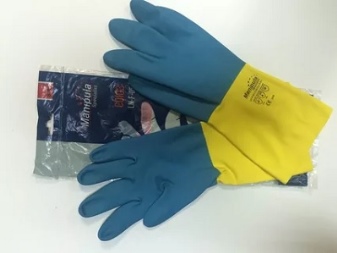
Peculiarities
Let's start with the fact that these gloves are of two types, which are called so: KShS type 1 gloves and KShS type 2 gloves. Their main difference is the thickness of the protective layer. Acid-alkali-resistant gloves of the first type are twice as thick as the second (from 0.6 to 1.2 millimeters). This allows them to withstand exposure to solutions with an acid and alkali concentration of up to 70%. However, their high density constrains the movement of the hand, which is why they are only intended for rough work. Technical gloves are much more reliable than ordinary rubber gloves (household or medical). They provide an increased level of protection and are able to withstand higher physical activity. This is a necessary quality, because if the protective layer breaks through, then hazardous compounds can get on the human skin.
They are made from latex. In terms of its properties, this material is similar to rubber, but it is better suited just for personal protective equipment. Latex is more viscous, which gives a greater degree of comfort, and is also completely natural, which makes it possible to reduce the negative effects of prolonged contact with the skin to a minimum. The description tells us that the recommended temperature for using gloves is 10 to 35 degrees. When they go beyond these limits, they will, of course, still be usable, but their protective performance or level of convenience may be reduced.
The service life of the gloves is unlimited, but in case of direct contact with acids, they can only be used for four hours. This is a very high figure for budget class personal protective equipment.

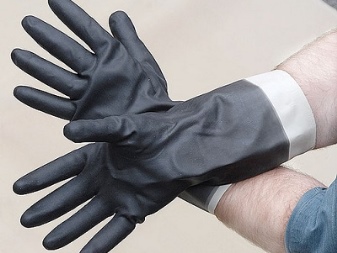
Dimensions (edit)
KShS gloves of the first type come in only three sizes. The first size is designed for a hand circumference of 110 millimeters, the second for 120 and the third for 130. The small selection of sizes is due to the fact that gloves of the 1st type are intended for rough work. Therefore, they are not designed for high comfort or hand mobility.
In comparison, the same Type 2 gloves come in seven sizes and offer more variation in the girth of the hand to provide greater comfort.
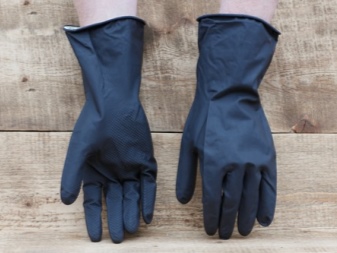
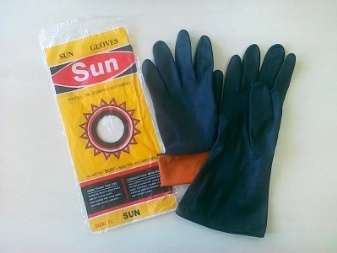
Scope of application
KSChS gloves of the first type are indispensable in many areas of industrial labor. Most often they are used for manual loading of various containers with aggressive chemicals. But they are also used to perform technical work that does not require high precision. They have found their application in factories, in auto repair shops and even in agriculture, where various hazardous chemicals are also often used. They are used in the manufacture and application of fertilizers, when working with electrolyte in batteries, disinfecting premises, working with hazardous compounds in chemical laboratories and many other places.
They must be used for any contact with chemicals that pose a threat to human skin. If you work in an area at least indirectly related to the chemical industry, or your hobby is somehow related to hazardous chemical compounds, you should have such gloves. Otherwise, you are at very high risk - any oversight can adversely affect both your hands and your health in general.
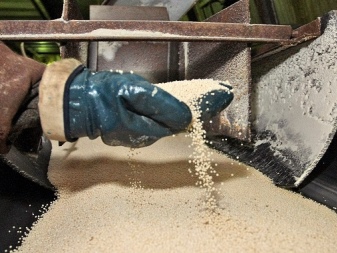
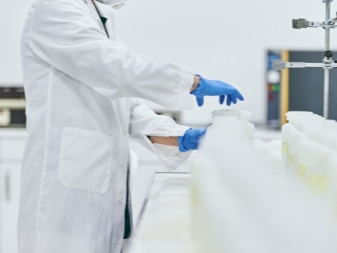
In the next video, you will find an overview of the MAPA Vital 117 Alto KShS gloves.













The comment was sent successfully.